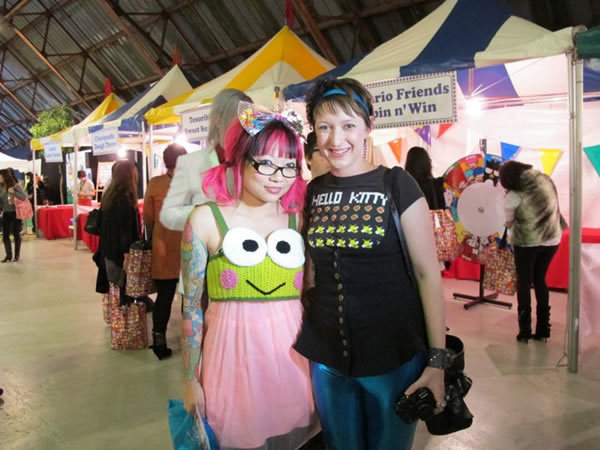As an angel investor and entrepreneur, Cyan Banister has gone where many technology investors fear to tread―at least in public. She is most closely associated with Zivity, an adult website she co-founded with her husband Scott. Zivity is less distinctive for the models it features in various stages of undress than for its business model, which shares revenues with its creative contributors. Banister’s other startup investments, both provocative and not, demonstrate a sense of the direction for online commerce that goes beyond the usual fixation with Facebook and Twitter.
Banister began her career unconventionally, dropping out of high school and living on her own at age 16. That didn’t stop her from a career in IT. She worked her way up from computer technical support to systems administrator, eventually doing technical management for several companies. When Cyan and Scott sold their company, IronPort Systems, to Cisco, she started thinking about what she really wanted to be doing with her life. The answer has at least three parts: Zivity, angel investor, and an ongoing gig as one of TechCrunch’s most original correspondents.
“Here on the West Coast, people care less about your education, more about your ability to do your job and what you’ve done,” she said. “I think Ivy League schools are about the people that you meet and not about the education you receive. I’ve seen a lot of people who have amazing connections from Harvard and Stanford that I don’t have. You pay for that: it’s like joining a private club. But I think I’m having a lot more fun.”
- Zivity is one of many adult sites on the Web. So I assume that you view its contribution not just in terms of lovely women, but helping content creators monetize their work.
That’s right. The human body, especially the female form, is incredibly beautiful and I’ve always been a fan. But it’s also a type of content that people are still willing to pay to see. That’s still unusual: if you look at the book industry, magazines, and newspapers, the prospects for online monetization are pretty dismal. So I thought I would start with the one area that I like and know, and experiment with monetization ideas that people hadn’t done before.
- From the beginning of e-commerce, the conceit has been that the porn industry is the only industry making money.
The porn industry was making lots of money, but now it’s on the decline because, as with the movie and music industries, pornography is a commodity and it’s free. You can Google a whole suite of porno “tubes” that are disseminating high quality pornography. People don’t want to pay for it, so the industry is in huge decline. Playboy is declining, while webcam and personal interaction sites are rising.
- Personal interaction sites?
For example, I have a huge investment in a dating site called GameCrush that is definitely not pornographic―and is doing really well. Players pay to play one-on-one video games with women, who get paid to play. Imagine a female player who is really good at Halo. You might pay to play her for 30 minutes. The players can see each other over a webcam, which is fun. This is a competitive, interesting space that the company founders realized was going untapped―and they went for it.
GameCrush is a valid business and well executed, but people tend to shy away because it’s so edgy. So I’m interested in it. On the other hand, I have an investment in a company called EcoMom, which is an ecommerce site for mothers. My fascination with that company is that they are trying to be like Zappos. I’m interested in any company that takes curating an experience for people to a new level.
My husband and I have over 20 investments right now. He oversees half and I oversee the other half. We do everything together. We don’t invest in anything if the other person objects, but that’s seldom happened. Usually my issues are around privacy: if a company has severe privacy issues, I won’t touch it.
- It sounds like the common thread for your investments is that people are not just looking for eye candy, but for some kind of connection. It’
s the Facebook story, but in more provocative surroundings. That’s a beautiful thing about Zivity. It’s a rich and vibrant community of photographers, models and fans. They all hang out together. I’m started seeing photographers fly across the country to meet models. I’ve seen fans produce photo shoots. We’ve got a fan on the East Coast who puts up money to get his favorite photographer and model together to do a shoot. Real friendships and connections are happening on Zivity. The pictures are like the icing on the cake.
- The business model reminded me of where the music industry may be going. Musicians are making less money from their recordings, but finding that their fans will pay to have some deeper involvement.
Some artists can do a concert series for three nights and make more money than they made on iTunes. I used to go to record stores and thumb through the records, and I felt like I was buying pieces of art: they seemed valuable and tangible. Eventually they became cassette tapes and CDs and then I could get them on demand for free and I lost my whole connection with the experience of buying music. If I want to hear music from Iron and Wine, I just load up Pandora or go to the iTunes store and I have it within seconds. It’s fast, but you no longer have that connection with the artist, you are not reading the inside of the art on the cover, not interacting with it in the same way you used to. The music industry will have to start thinking about how to bring back that kind of value for the fan.
- As investors, have you and Scott seen any any big shift in the last year or two in where the industry is headed?
I think we are in the middle of a second dot.
com bubble right now, and I’m slowing down my investing until I figure out what’s going on. I’m seeing more startups than I’ve ever seen. That is partly because it takes less money to start a company these days: even $100,000 to $250,000 can do it. In the first dot. com boom, bandwidth and storage were expensive. But with cloud computing, including online tools and development frameworks, you can get a website up and running in a couple of days. Scott tends to gravitate towards really big ideas, and he looks for things that we are going to be invested in for the next 10-15 years, like SpaceX, which is launching rockets into space, and eLEGS, which helps people who are paraplegic to walk again. He’s into complicated intellectual properties that are potential game changers for their industry.
- And what about you?
I’m more interested in things that are edgy, that are businesses that people won’t dare to do. I’m also interested in products that do well in Japan and could cross over here into the U.
S. Japanese vending machines are a good example: they are amazing, and we are now starting to see vending machines at our airports that were clearly inspired by Japanese culture. Automated food fascinates me. I’d love to see companies like Subway and Noah’s Bagels offering it. That would cut down on operational costs, while offering a fun consumer experience. I like to go to Japan twice a year, sit back with a cup of coffee, and just watch people―because I love to see how they live their lives. What I often see is the answer to a lot of things we haven’t yet figured out. Last time I was in Japan, I watched people watch television on their phones on the subway, and I thought: I can’t do that. They had QR Code long before we did, and are doing things, like treasure hunts, ahead of the U.
S. One of the companies I invested in is a character-based flash drive company, and that investment was completely inspired by my experiences in Japan. I noticed that everyone in Akihabara seemed to have flash drives that were shaped like sushi and little rubber ducks. As soon as I saw those, I knew we had to have them in America and that they’d be a big hit. And sure enough, I found a company that was doing it, Mimoco. com, and it is a big hit. They make these character-based flash drives called Mimobots. They look like little Star Wars and Hello Kitty types. - What are you doing at TechCrunch? How did you get involved and what’
s your goal with it? I’ve had had a relationship with the TechCrunch team over the past three years. My company launched at the very first TechCrunch conference, TC40. I fell in love with their staff: they hire some amazing people. With my posts, I want to showcase entrepreneurs, not so much what they’re doing but who they are as humans and how they got to where they are. These days, people are so trained in public relations that the walls can quickly go up and you don’t get any real information. I once talked to a guy at a TechCrunch’s TechFellows awards whose name tag said “Stealth,” which told me he wasn’t going to break any news. So I asked him if he had any advice he could give entrepreneurs, and he said “that’s it?” He looked relieved, and he eventually opened up. People have told me that nobody ever asked them about their car accident or their video game skills, or even their grappling with drug addiction or their pet goose. But it turns out these things can be important. Sometimes, their businesses wouldn’t exist without them.
- So what advice from your own life can you share with my readers?
I’ve never accepted “no” as an answer and have never believed that I couldn’t do anything. I’m competitive. One time a friend told me I couldn’t become an electrical engineer. I came very close to heading down that route just to prove him wrong. I still think I could do it. I believe anything is possible, and I wish other people did too. They say that in Japanese culture, nobody should stick out: that’s how they create harmony. I personally think you should stick out, be the best you can be, and do everything that you dream: no matter how big it is, you should try. For all of the successes I have, I’ve fallen on my face ten times more. It doesn’t stop me―it just makes me stronger. I learn from it. I think: how can I do this differently?





